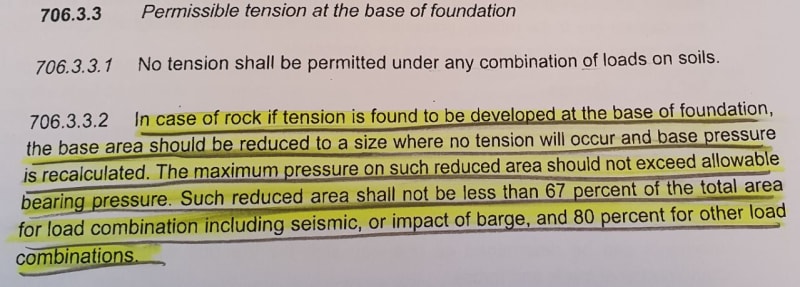ChrisToms
Structural
- Sep 6, 2011
- 4
Hi all.. i am designing a tower crane base. The footing is safe in overturning although it has about 25% of its area in negative pressure for out of service condition. The design is carried out based on ACI code. I am not able to find any clause related to maximum percentage of negative pressure permitted as per the standard. Can anyone provide the clause on limitation on negative pressure below footing as per any American standard? TIA


